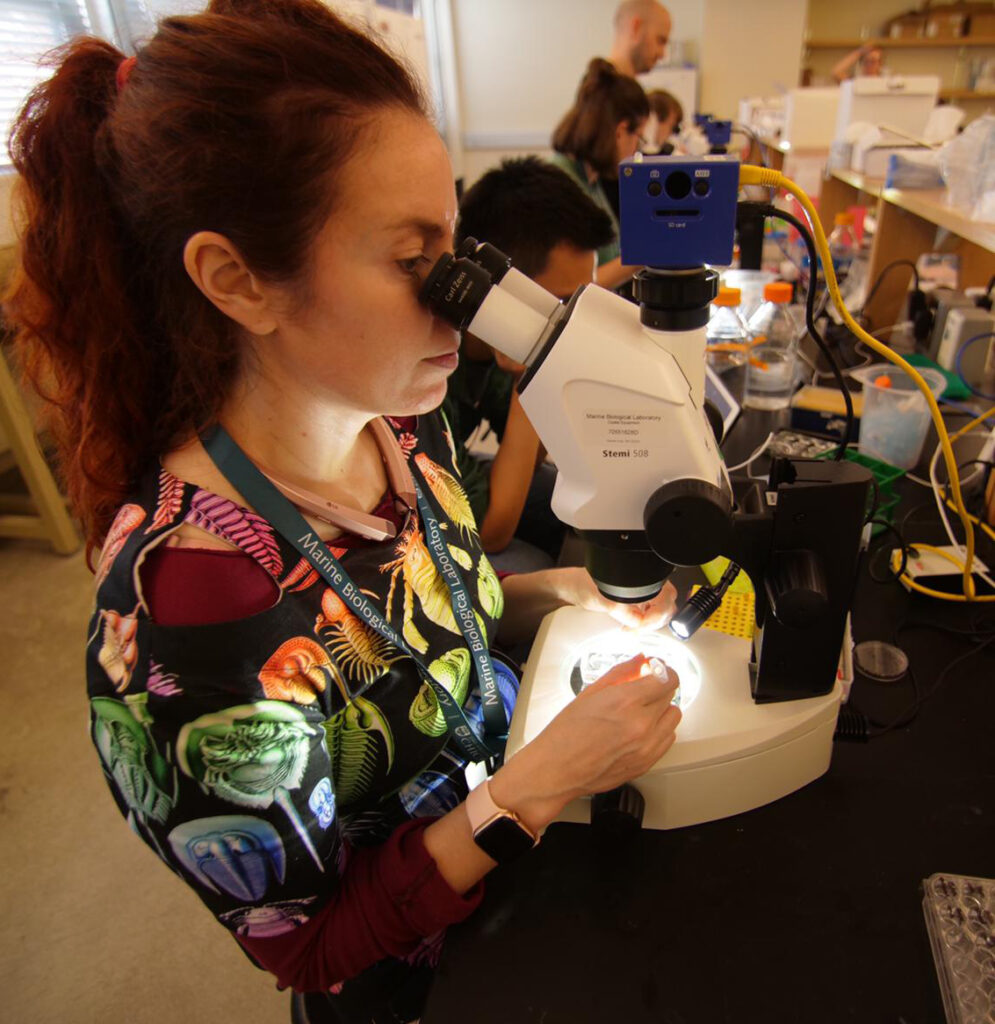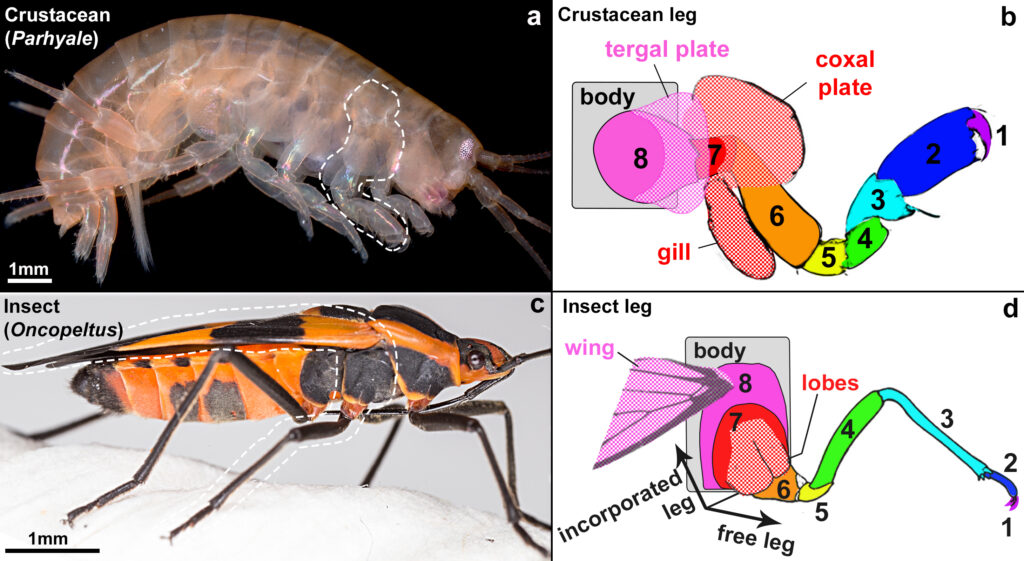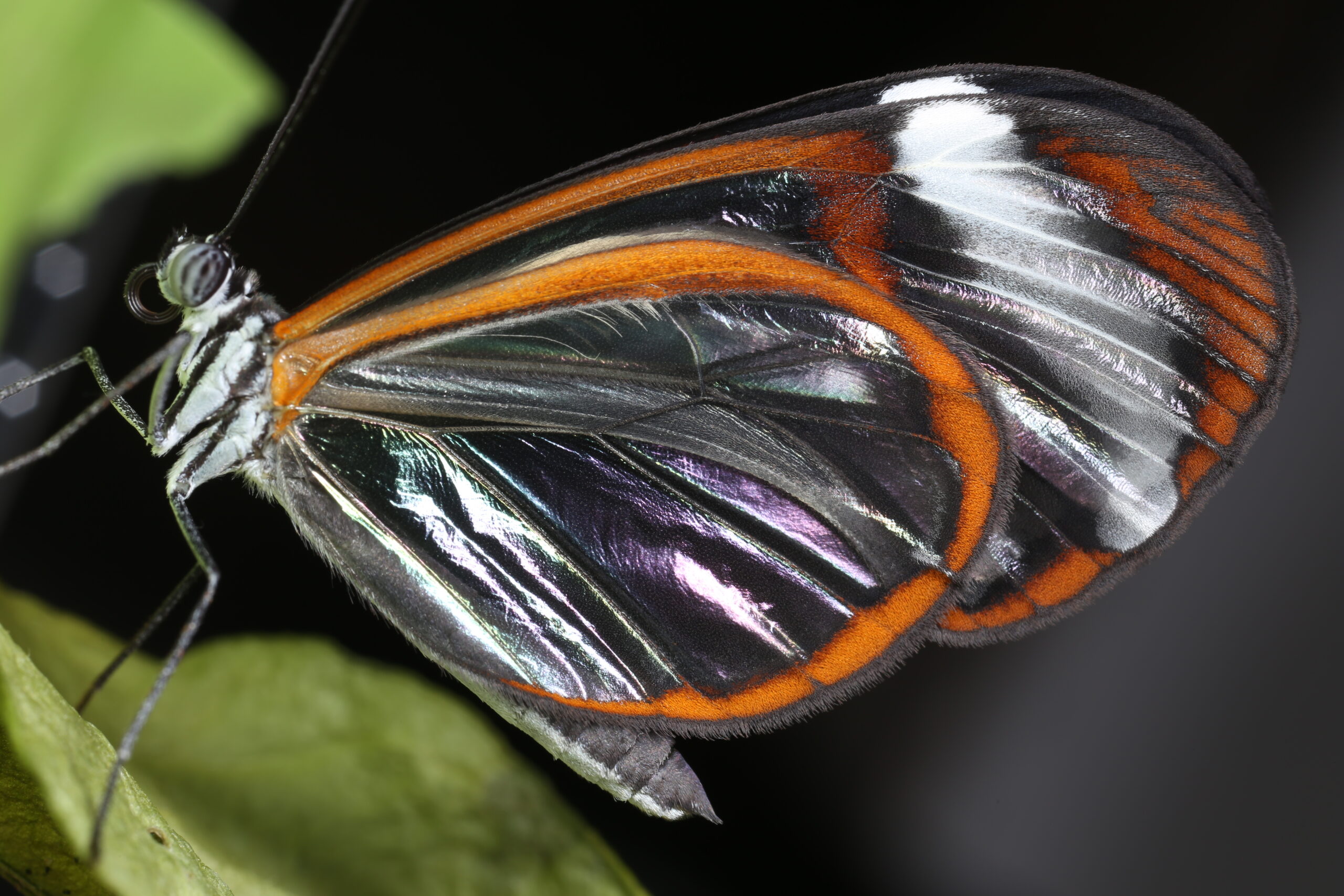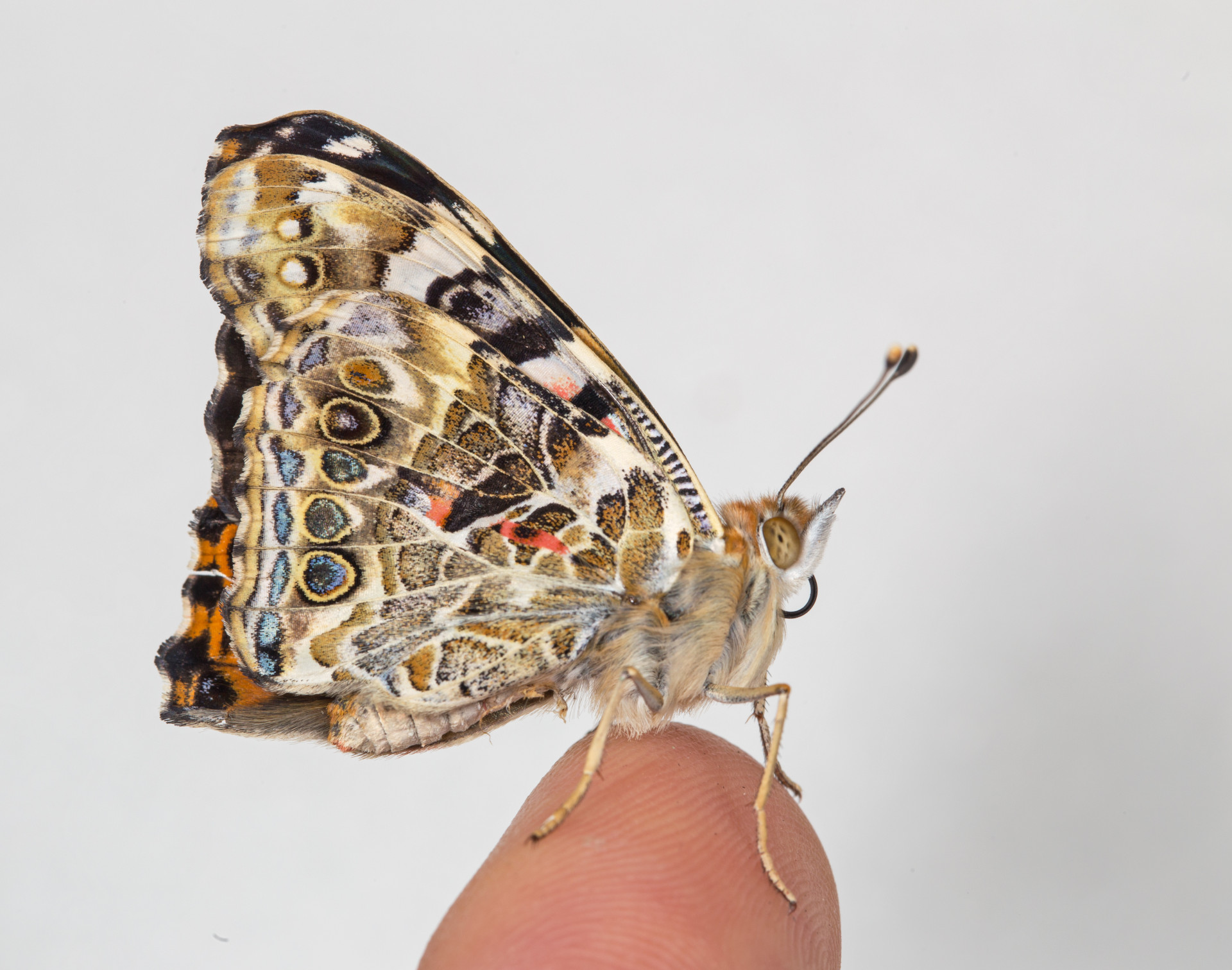It sounds like a “Just So Story” – “How the Insect Got its Wings” – but it’s really a mystery that has puzzled biologists for over a century. Intriguing and competing theories of insect wing evolution have emerged in recent years, but none were entirely satisfactory. Finally, a team from the Marine Biological Laboratory (MBL), Woods Hole, has settled the controversy, using clues from long-ago scientific papers as well as state-of-the-art genomic approaches. The study, conducted by MBL Research Associate Heather Bruce and MBL Director Nipam Patel, is published in Nature Ecology & Evolution.

Insect wings, the team confirmed, evolved from an outgrowth or “lobe” on the legs of an ancestral crustacean (yes, crustacean). After this marine animal had transitioned to land-dwelling about 300 million years ago, the leg segments closest to its body became incorporated into the body wall during embryonic development, perhaps to better support its weight on land. “The leg lobes then moved up onto the insect’s back, and those later formed the wings,” says Bruce.

Citation: Heather S. Bruce and Nipam H. Patel (2020) Knockout of crustacean leg patterning genes suggests that insect wings and body wall evolved from ancient leg segments. Nature Ecol. Evol., DOI: 10.1038/s41559-020-01349-0

